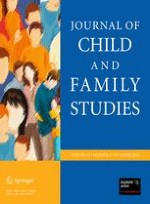01-10-2010 | Original Paper
Inter-Parent Agreement on the Syndrome Scales of the Child Behavior Checklist (CBCL): Correspondence and Discrepancies
Gepubliceerd in: Journal of Child and Family Studies | Uitgave 5/2010
Log in om toegang te krijgenAbstract
Using multiple informants from a clinical setting, potential associations between inter-parental agreement and age, gender, and child diagnosis were explored in the current study. Archival data from psychological evaluations conducted on 174 children ages 5–18 through a hospital-affiliated outpatient psychology clinic were analyzed, focusing on mothers’ and fathers’ scores on the syndrome and index scales of the Child Behavior Checklist (CBCL). Although inter-parent correspondence levels on each of the subscales were found to be moderately high (averaging r = .50), significant discrepancies between the severity levels of parent reports were found on nine of 11 subscales, with mothers’ ratings consistently being slightly higher. Data from this clinical sample suggest that although single-informant ratings of child behavior may be generally representative of reports from both parents on many of the CBCL narrow-band scales, age, gender, and child diagnosis were related to several patterns of agreement on specific syndrome scales. Therefore, it is important to include fathers, because they provide a unique perspective on social problems, delinquency, and attention problems, in particular. Both correspondence and discrepancies between parent reports of specific child problems can provide valuable clinical information that is useful for child assessment and treatment.
